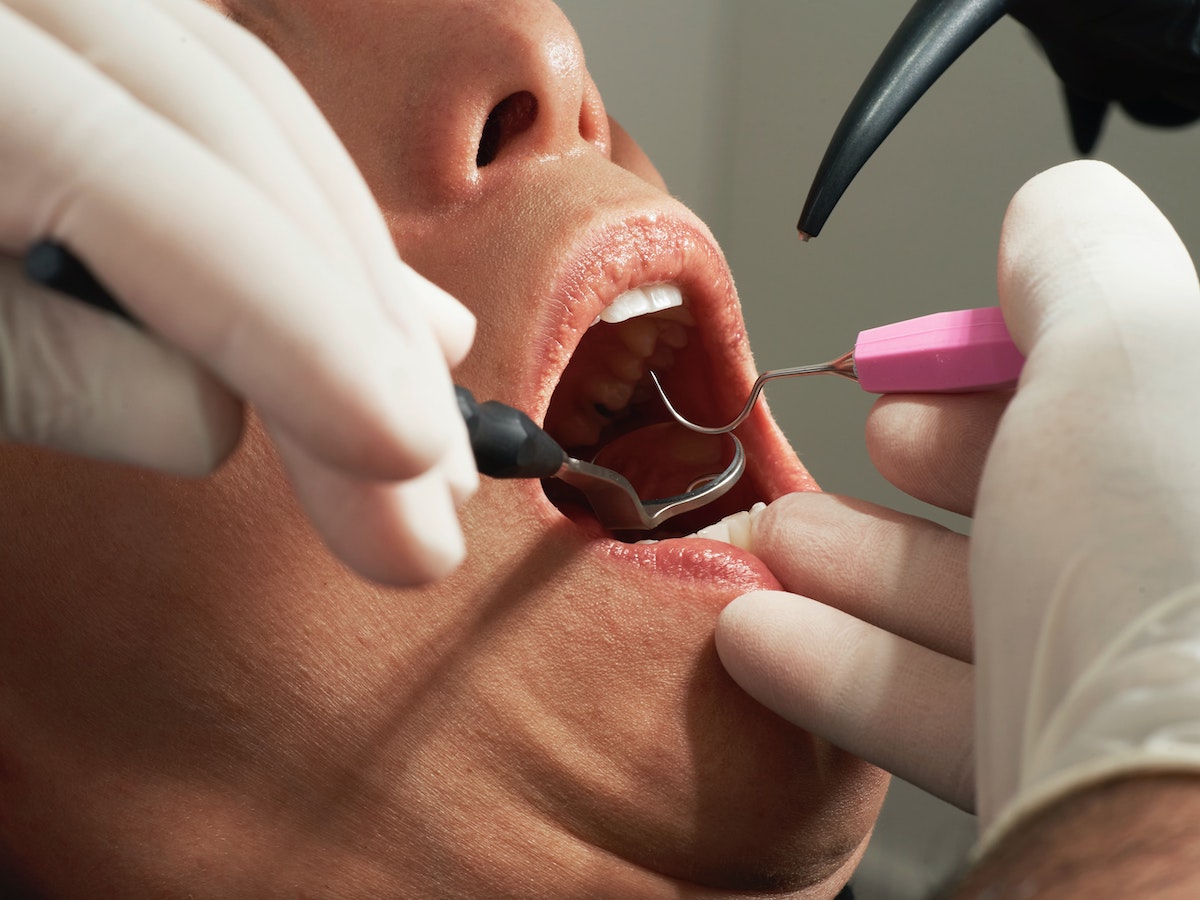Dental fillings are the go-to solution for a cavity. They offer a safe, effective fix that can be completed in a single visit to the dentist.
While placing a filling is a quick and routine procedure, there are times when a dentist might choose to do a short-term repair with a temporary filling, sometimes called an intermediate restorative filling. This is followed up with a permanent restoration at a later date.
What are temporary fillings? They are exactly what their name implies: A filling meant to patch a cavity until it can be fixed for good. They differ somewhat from ordinary fillings, so it helps to know when it makes sense for a dentist to use one.
How are Temporary Dental Fillings Different?
Like any filling, a temporary filling creates a barrier that keeps bacteria from getting in to do further damage to a decayed tooth. Because it will only be in the tooth until it can be replaced, it does not need to be as durable as a permanent filling.
Glass ionomer is the most common substance used. It is strong enough to hold up for a few weeks or even a few months, but is softer than amalgam (“silver fillings”), porcelain, or other substances. It is also easy for the dentist to remove when it is time for the permanent restoration of a new filling or crown. Temporary fillings may be tooth colored, but most often they have a slight tint so the dentist can easily identify them when it comes time to replace.
The procedure for temporary fillings is similar to that of any cavity filling. The dentist numbs the tooth and surrounding gums with novocaine or another local anaesthetic. The decayed portion of the tooth is removed with a drill, and then the filling material is packed into the hole. Finally, the edges are smoothed and shaped so that the bite lines up properly.
In the case of a minor cavity, getting a temporary filling can be very quick, taking less than 30 minutes. There may not be a need to numb or drill the tooth at all, but simply to fill the hole.
What are Temporary Dental Fillings Used For?

Temporary fillings are only used in certain situations, and patients are always made aware that there will be followup treatment. In the meantime, patients can resume their normal lives, eating, drinking, and talking, until replacement is scheduled. Following are some instances when a dentist might use a temporary dental filling:
Emergency Pain Management
Sometimes toothache pain from a cavity or a cracked or lost filling might send a patient to the dentist for some emergency relief. If the visit happens after hours or the dentist has to squeeze the patient into a packed schedule, there might not be time to perform the complete procedure. A temporary filling will do in the meantime.
If an emergency happens while a patient is traveling, they may need to see someone other than their regular dentist for care. It might make sense to get a temporary filling on the spot, and wait until they are home and their own dentist can do the permanent restoration.
With a Temporary Crown
Crowns cap teeth that are too damaged to support a normal filling. They may be used by themselves or as part of a root canal procedure. First, a dentist removes all of the infected and decayed tissue. In the case of a root canal procedure, the nerves and blood vessels at the tooth’s core are also removed. Finally, a realistic looking crown is placed on top.
Creating the permanent crown in a lab can take a few weeks. Until then, the dentist can place a temporary filling into the tooth and cover it with a temporary crown. The alternative would be leaving a gaping hole, which would be unhealthy, unattractive, and possibly painful.
Nerve Sensitivity
If there is extreme sensitivity or pain in the exposed nerve with a cavity or during a procedure, a special type of temporary filling called a sedative filling might be used. Made of a material called Zinc Oxide Eugenol, this dental cement contains medicine to relieve the pain. Zinc Oxide Eugenol has the same properties as oil of cloves, a substance found in natural over-the-counter toothache remedies.
Using a temporary sedative filling can desensitize the tooth, giving the patient much needed pain relief, while keeping its structure stable until a follow up procedure.
While Evaluating Next Steps in Treatment

Sometimes, the main goal for a temporary filling is to stabilize a tooth and prevent it from getting worse while the dentist decides which course of action is best. If there is an infection (called pulpitis) at the root of the tooth, the nerves and tissues will be inflamed. The temporary filling gives the dentist time to assess how the tooth is responding. If the pulpitis is reversible, the tooth may start to heal, meaning it can be fixed with a permanent filling. Or, it may prove to be irreversible pulpitis, meaning a root canal procedure is in order.
Caring for Temporary Fillings
While a temporary filling is in place, patients need to be careful not to damage or dislodge them. They do not have the same durability as real teeth or permanent fillings. The dentist will typically give instructions that include being gentle when brushing and flossing. They may suggest avoiding foods that are crunchy or chewy. Patients may want to try chewing on the opposite side of the mouth. Even prodding the filling with their tongue over an extended period of time could loosen it.
It is important to remember that these fillings are for short-term use and are not meant to last. It is not a good idea to put off the final procedure too long. If a temporary filling breaks or falls out, bacteria can get into the tooth and cause more decay. And exposed nerves inside the hole left behind can be very painful.
When It’s Time to Replace Temporary Fillings
Regardless of the reason for getting a temporary filling, these appointments should always end with plans for what comes next. The dentist will usually want to schedule time to remove and replace the filling within a few weeks. If a crown or root canal is necessary, that should happen as soon as possible too.
Removing temporary fillings is similar to the process of putting one in. The dentist will numb the area and take out the temporary filling. It is designed to come out easily, but some drilling might still be necessary. Once out, the permanent filling material goes into the hole and is shaped and sculpted to create a natural feeling surface, or a permanent crown is affixed.
Temporary fillings are effective for patients who need a quick fix for a cavity. If you suspect you have a cavity and need to have it filled, you can make an appointment with a dentist near you with our online tool.


